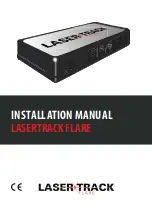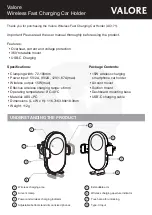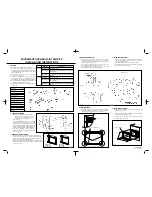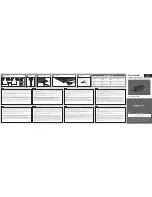
ROUTING
Study the underside of the vehicle and decide how to route each branch of the air circuit.
• To minimise the risk of chafing, avoid running tubing over metal edges as much as possible
• Avoid close proximity to heat sources such as the exhaust assembly
• Choose a route that provides as much protection as possible from dirt, debris and any
solid objects that may impact the underside of the vehicle
> It is recommended that tubes are guided alongside brake lines as much as possible.
Use cable ties (‘tie wraps’) to secure tubing to the chassis, taking care not to
over-tighten them.
5.10 BELLOW INFLATION
Once installation of the air assist kit is complete, inflate the air bellow to achieve the desired
ride height via the inflator console taking careful note of the following.
ONCE THE INSTALLATION OF THE AIR ASSIST KIT IS COMPLETE:
•
Inflate the air bellows to achieve the desired ride height via the inflator console.
•
To achieve a correct ride height, the rear of the vehicle is approximately 6 cm higher than
the front of the vehicle. That will correspondent with a bellow height between 13 cm and
15 cm.
•
The correct used pressure is up to the discretion of the installer, but is mostly between the
1.5 bar and the 4.5 bar.
•
The pressure for driving your vehicle is depending on the weight of the vehicle and the
condition of the original springs.
•
Always keep in mind that you are using air assist suspension, that means helper springs,
they are designed to help. Do not let them take over the original springs.
•
Because our system is independent between the left and the right side, it is not a problem
to inflate one side more to achieve the same height on the left and also on the right side.
•
Once you know the pressure on your left and on your right side, make good notice of it, so
you can check the pressure of your system every time you start driving.
•
The note here below is for extreme situations.
IMPORTANT: Maximum and Minimum Pressure
MAXIMUM PRESSURE
7.0 BAR
MINIMUM PRESSURE
0.5 BAR
Do not exceed 7.0 bar (100 psi), which is the recommended maximum charge pressure
for the air springs. The springs may be deflated if the vehicle is to be stored for a
lengthy
period without use, but a pressure of at least 0.5 bar (7 psi) should be maintained at all
times in order to avoid possible compression damage to the springs.
14 | INSTALLATION MANUAL |
AUXILIARY AIR SUSPENSION |
SPRINTER 408D/416CDI AND 4X4 / VOLKSWAGEN LT-46 AND 4X4 (1995-2006)
JULY 2021










































